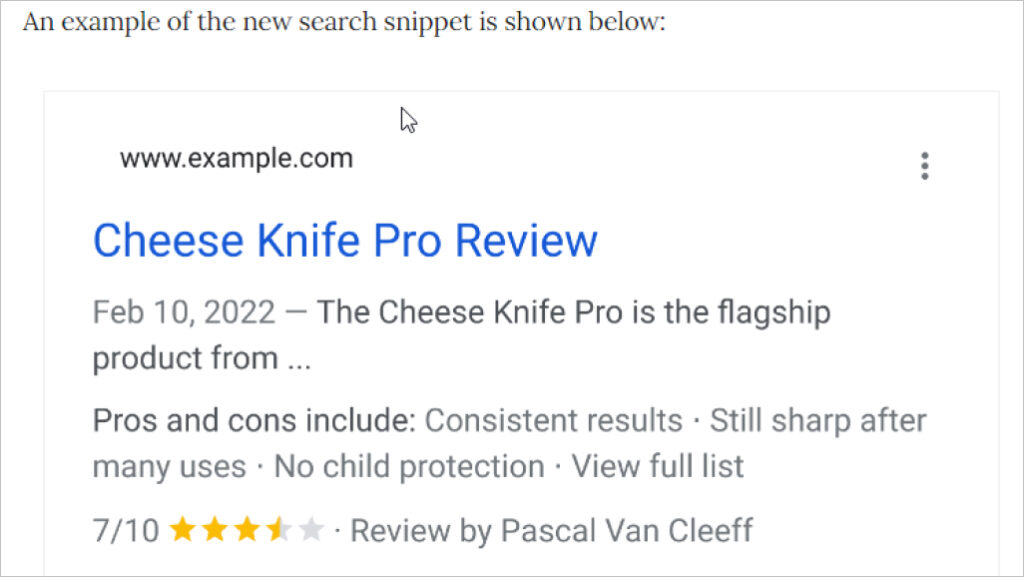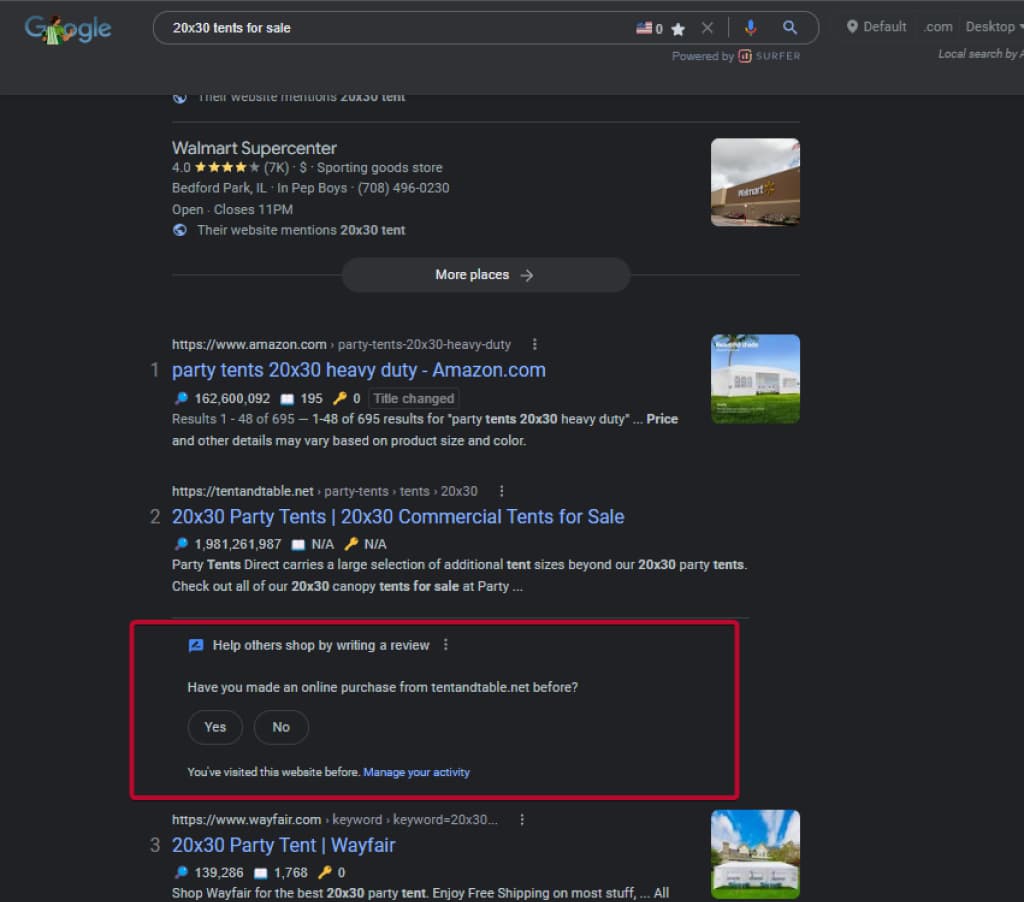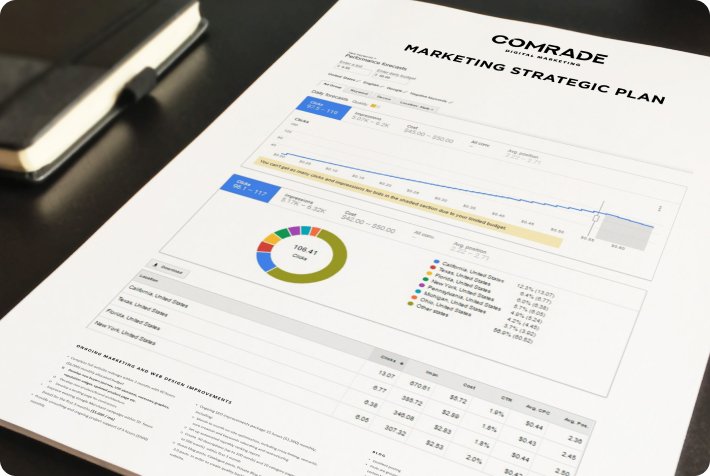Everybody wants to profit from the higher-than-ever amount of online spending. But the competition is intense. If you miss out on SEO opportunities, your competitors will gladly grab your prized position in Google’s search results.
A common misunderstanding in eCommerce is that customers initially land on the homepage or a category page and only then move on to products. This presumption is misleading. Product pages often receive a lot of organic traffic from customers who are ready to make a purchase. You’re losing out if your product pages don’t take the lead in your SEO strategy.
Keep reading to find out how to improve your product page SEO and increase conversions.
What Does a Good Product Page Consist Of?

First of all, you should have a clear idea of what a good product page looks like. Here are the key elements of a healthy product page:
1. Product Name
Product names should be clear, concise, and relevant to the product. If Google detects any inconsistency, your page rank can be devalued.
Additionally, each product name should be optimized for product-specific queries, not only for brand or brand + product category ones, as you don’t want product pages to compete with your categories.
2. Price
No product page (that has any chance of ranking) can exist without prices.
- Price is a mandatory attribute of any product page and should also be specified in other places where a product can possibly appear (Google Images, YouTube, SERPs). The same applies to product-related rich snippet results. Without price, Google won’t treat the product page as an actual product page (if there are no reviews either, see below) and this will result in poor page visibility.
- Obviously, if there’s no price, the page won’t answer one of the key questions asked by users — how much does the product cost? As a result, behavioral factors will suffer, and the page will get a penalty on search.
- Having the price on the product page is an industry standard. If the user doesn’t see the price, they will leave and go to a competitor who does have it. Nobody will call to ask for the price.
3. Product Reviews
Reviews are as important as pricing. If the page doesn’t specify prices but there are reviews on it, Google will classify it as a product page anyway.
According to Google’s latest content update, high-quality reviews are as important as ever.
First and foremost, reviews should be authentic and cover a customer’s experience using the product in detail. Uninformative reviews like “Great product,” “Cool stuff,” etc., are now considered thin content, and Google can de-rank the page for such reviews.
A good review should include:
- Introduction (when the customer bought the product, whether they had time to try it out, etc.).
- Target audience (who would benefit the most from the product).
- Pros and cons of the product.
- Conclusion (whether the product offers good value).
It should be noted that pros and cons are the most important part of the review, as Google now considers them to be part of the product structured data.
Google can use this data to identify low-quality product reviews. Even pages that didn’t get devalued after previous updates could drop rankings.
In contrast, if a review is substantial and fully covers the product, the page can be rewarded with a better rich snippet:

Reviews also help other people make a decision to purchase the product, and that’s what Google keeps a close eye on:

4. Shipping Information
Displaying shipping information is also an industry standard. Missing out on this type of info will adversely affect behavioral factors, and ultimately, page rankings.
Shipping information includes:
- Product availability. It’s mandatory for the product markup, as otherwise, Google won’t associate the page with the product.
- Estimated shipping time and shipping fees are in Google’s guidelines for the product page and if the page is missing this info, Google will penalize it.
5. Payment and Product Return Information
You should also add info about payment methods (credit card, Paypal, Apple Pay, Google Pay, etc.) and the terms of return. If customers can pay for the product after they have examined it, make the option clear. The customer is less likely to drop out of the sales funnel to search for this information if you have it on the page.
6. Engaging Product Description
Good product descriptions convince customers to make purchases. However, don’t write an essay, as no one will be interested in that. Instead, make descriptions short but engaging and discuss the product benefits.
Additionally, you can include low-competition, closely related keywords that you wish to rank for here. But don’t go overboard!
7. Descriptive and Consistent Product URL
A clear URL structure makes it easier for users and search engines to grasp the layout of your website. Furthermore, when a visitor sees a URL that corresponds to their search query, you are more likely to get more clicks on your snippet in Google.
8. Product Meta Title and Description
Both the title tag and the meta description are considered to be “metadata” in the context of SEO. In terms of how your product page ranks and is displayed to searchers, both are crucial.
A good title:
- Is readable.
- Contains important words at the beginning.
- Is authentic.
- Ranges in length from 30 to 60 characters.
The same holds true for an effective meta description (except that its length should be up to 160 characters).
9. Images and Videos
It’s likely that conversion rates will increase if you provide high-quality product photographs and videos that display the products in context and detail.
10. Q&As and FAQs
If you have a vibrant community, you can incorporate a moderated Q&A section on your product pages. This way, people can ask and answer each other’s questions and you will probably rank for even more queries that people are searching for.
Alternatively, you can include traditional FAQs about the products you’re offering. You know your customers, so you are aware of the types of inquiries they might make. By addressing these, you create content that is more entertaining and worthwhile and you’ll get fewer support requests.
How to Optimize the Product Page
Now that you know what functional elements a product page should include, let’s take a look at a few crucial points you should (and some you must) consider to make the product page rank and convert better.
1. Watch Out for Page Quality
Lately, Google has rolled out another update reconsidering its guidelines for page quality. We’ve already touched upon this issue when talking about reviews. But reviews are not the only type of content you should focus on. According to Google, the whole page should comply with the E-A-T (Expertise, Authoritativeness, and Trustworthiness) concept.
Google once again repeated that the level of E-A-T the page requires depends on the purpose and the topic of the page.
This means that the content should be consistent and relevant to your business. A simple example: if your website is all about granite countertops and you make a page about granite cookware, your site can be devalued.
2. Improve Page Experience
In May 2022, Google announced that page experience signals would be included in Google Search ranking. These signals measure how users perceive the experience of interacting with a web page and contribute to Google’s ongoing work to ensure people get the most helpful and enjoyable experiences from the web.
In layman’s terms, the faster the page loads, the better the user experience, and that’s what Google deems appropriate for page rank improvement.
It should be noted that the majority of users use mobile devices for online shopping, so you should pay special attention to mobile versions of your product pages.
3. Use Social Proof Services
In an online store, there are no queues, and you can’t see other buyers. It can create a feeling that nobody buys from this store. Social Proof services fix this problem. For example, over the last hour, this product has been bought X times, or the product is running out of stock, with only X products left.
4. Use CTAs
A good call to action (e.g., Add to Cart) on every screen (sticky CTAs) increases the chances of converting.
Good Product Page Example
Here’s an example of a right-structured product page:

Product Page Optimization Checklist
Bottom line: we created a checklist summarizing how your product pages should be structured and what guidelines you should follow to ensure the pages have people-first content, as well as useful page optimization tips and tricks.
- Focus on the mobile version of the product page.
- On the first screen of the mobile version of a product card or a category, ensure the visibility of the product, its name, price, and a set of product sorting filters rather than the menu, banners, breadcrumbs, etc.
- Include information on product availability, handling & shipping, payment methods, guarantees, and returns referring to a separate page(s).
- Write concise and informative product descriptions and product specifications.
- Solicit informative buyer reviews with photos. At the top of the page, specify the average star rating of the product and the total number of reviews. The reviews should be placed under the description and specifications.
- Upload several high-quality product images (also videos, 360, VR/ER).
- Make special offers and discounts. For example, volume discounts, free shipping for orders over $XX, bundle offers, etc.
- Where possible, add related product accessories close to the “Add to Cart” button.
- Integrate the opportunity to compare the given product with similar products, and add video guides or reviews.
- Ensure a wide choice of similar products across categories, business-related products, and/or recently viewed products, category bestsellers, etc.
- It’s beneficial to add information about store consultants (a photo with a resume) assisting with product choice over the phone or other means of communication.
- Add information on the product/service insurance and additional services.
- Add the People Also Search section with relevant searches on particular products (SKU variations, alternative names, etc.).


